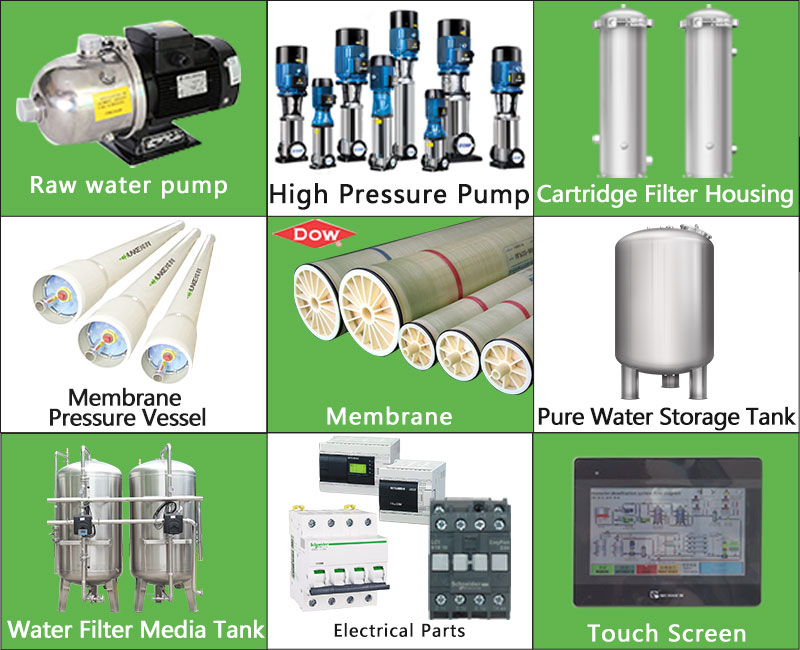What is adsorption in water treatment?
Water treatment technology involves many complex and sophisticated processes designed to remove pollutants from water and ensure that the water quality meets drinking, industrial or environmental standards. Among these processes, adsorption is an important and widely used technology.
Although the adsorption process may sound a bit technical, it plays a vital role in our daily lives. From home water purifiers to large-scale industrial water treatment systems, adsorption technology is almost everywhere. So, what is adsorption? And what is its role in water treatment?

What is adsorption?
Adsorption refers to the process by which one substance attaches to the surface of another substance. Specifically, adsorption uses the surface of porous materials to attract and fix pollutants in water on its surface, thereby separating these pollutants from the water body. Adsorption is widely present in nature. For example, water vapor in the air can be adsorbed on walls or windows to form water droplets, and petroleum molecules can be adsorbed on soil particles.
Adsorption is different from absorption. Absorption refers to the absorption of a substance by another substance as a whole and evenly distributed in it. In contrast, adsorption only occurs on the surface, and the adsorbate only attaches to the surface layer of the adsorbent.
The adsorption process can be physical adsorption or chemical adsorption. Physical adsorption is caused by physical forces such as van der Waals forces, and the chemical bond between the adsorbate and the adsorbent is weak and easy to reverse. Chemical adsorption involves the formation of chemical bonds, and the binding force between the adsorbate and the adsorbent is strong and difficult to reverse.

What is the adsorption principle in water treatment?
In the water treatment process, adsorption technology is mainly used to remove organic pollutants, heavy metal ions, residual chlorine and other harmful substances in water. Its principle is based on the surface area and pore structure of the adsorbent, and the pollutants in the water are captured and fixed on the surface of the adsorbent through physical or chemical adsorption.
Commonly used adsorbents include activated carbon, zeolite, silica gel, alumina, ion exchange resin, etc. Among them, activated carbon is one of the most commonly used adsorbents because it has a large specific surface area and rich pore structure, and can efficiently adsorb a variety of organic and some inorganic substances.
The adsorption process is usually divided into three steps:
1. Diffusion: The pollutant molecules diffuse from the water to the surface of the adsorbent. This process is affected by the water flow rate, temperature and the surface properties of the adsorbent.
2. Surface adsorption: pollutant molecules are fixed on the surface of the adsorbent and attached to the adsorbent through physical or chemical forces.
3. Internal diffusion: In some cases, pollutant molecules will further diffuse into the internal pores of the adsorbent, forming a stronger adsorption.
The efficiency of the adsorption process depends on multiple factors, including the properties of the adsorbent (such as surface area, pore structure), the properties of the pollutants (such as molecular size, polarity), the temperature and pH value of the water, etc.

What are the applications of adsorption technology in water treatment?
Adsorption technology is widely used in water treatment, involving drinking water treatment, sewage treatment, industrial wastewater treatment and other fields. The following are some typical application scenarios:
Drinking water treatment
In the process of drinking water treatment, adsorption technology is mainly used to remove organic pollutants, odors, residual chlorine and trace pollutants in water. Activated carbon adsorption is the most common drinking water adsorption technology. By adsorbing residual chlorine, organic matter and trace organic pollutants, activated carbon can improve the taste and odor of water while reducing the concentration of substances in water that may be harmful to the human body.
For example, in water plants, activated carbon is often used to remove trace pollutants in water that are difficult to remove by other processes, such as pesticide residues and volatile organic compounds (VOCs). In addition, activated carbon filters are often used in household water purifiers to ensure the safety and quality of household drinking water.
Industrial wastewater treatment
Industrial wastewater usually contains complex pollutant components, such as heavy metals, dyes, petroleum substances, organic solvents, etc. Adsorption technology is widely used to treat these industrial wastewaters due to its high efficiency and versatility.
In the treatment of heavy metal wastewater, ion exchange resins and activated carbon are often used as adsorbents, which can effectively remove heavy metal ions such as cadmium, lead, and mercury from water. By adjusting the pH value and the amount of adsorbent, the adsorption efficiency can be improved to meet the wastewater discharge standards.
Dye wastewater is another type of industrial wastewater that is difficult to treat. Due to its strong color and stable chemical properties, traditional treatment methods are often difficult to work. Adsorption technology, especially the use of modified activated carbon or synthetic adsorption materials, can significantly reduce the color and organic concentration of dye wastewater, thereby reducing environmental pollution.
Wastewater recycling
In wastewater recycling, adsorption technology also plays an important role. After the initial treatment of sewage, the residual trace pollutants and harmful substances are further removed by adsorption technology, so that it can meet the standards of recycled water and can be used for agricultural irrigation, industrial cooling or as urban landscape water.
For example, in sewage treatment plants, activated carbon adsorption is often used to remove trace organic pollutants that remain after biological treatment to ensure that the effluent water quality meets the standards for safe use.

What are the advantages and limitations of adsorption technology?
The wide application of adsorption technology in water treatment is due to its unique advantages. However, this technology also has some limitations, which need to be weighed and considered in practical applications.
Advantages of adsorption technology
● High efficiency: Adsorption technology can efficiently remove trace pollutants in water, including some organic matter and heavy metal ions that are difficult to remove by other methods.
● Flexibility: There are a variety of adsorbents, which can be selected and optimized according to different water quality and treatment goals. Different adsorbents can be used to treat different types of pollutants, with strong flexibility.
● Simplicity: The adsorption process is relatively simple, does not require complex equipment and operations, is easy to control and manage, and is suitable for a variety of application scenarios.
Limitations of adsorption technology
● Saturation and regeneration of adsorbents: During use, adsorbents gradually become saturated, and their adsorption capacity decreases, requiring replacement or regeneration. The regeneration process may involve high temperatures, chemical treatments, etc., which increases operating costs.
● Selectivity issues: The adsorption capacity of adsorbents for different pollutants varies greatly. For water bodies with mixed pollutants, multiple adsorbents may need to be used in combination to achieve the desired effect.
● Adsorption rate: The adsorption rate is affected by multiple factors such as pollutant concentration, temperature, and pH value, and the actual treatment efficiency may fluctuate.






